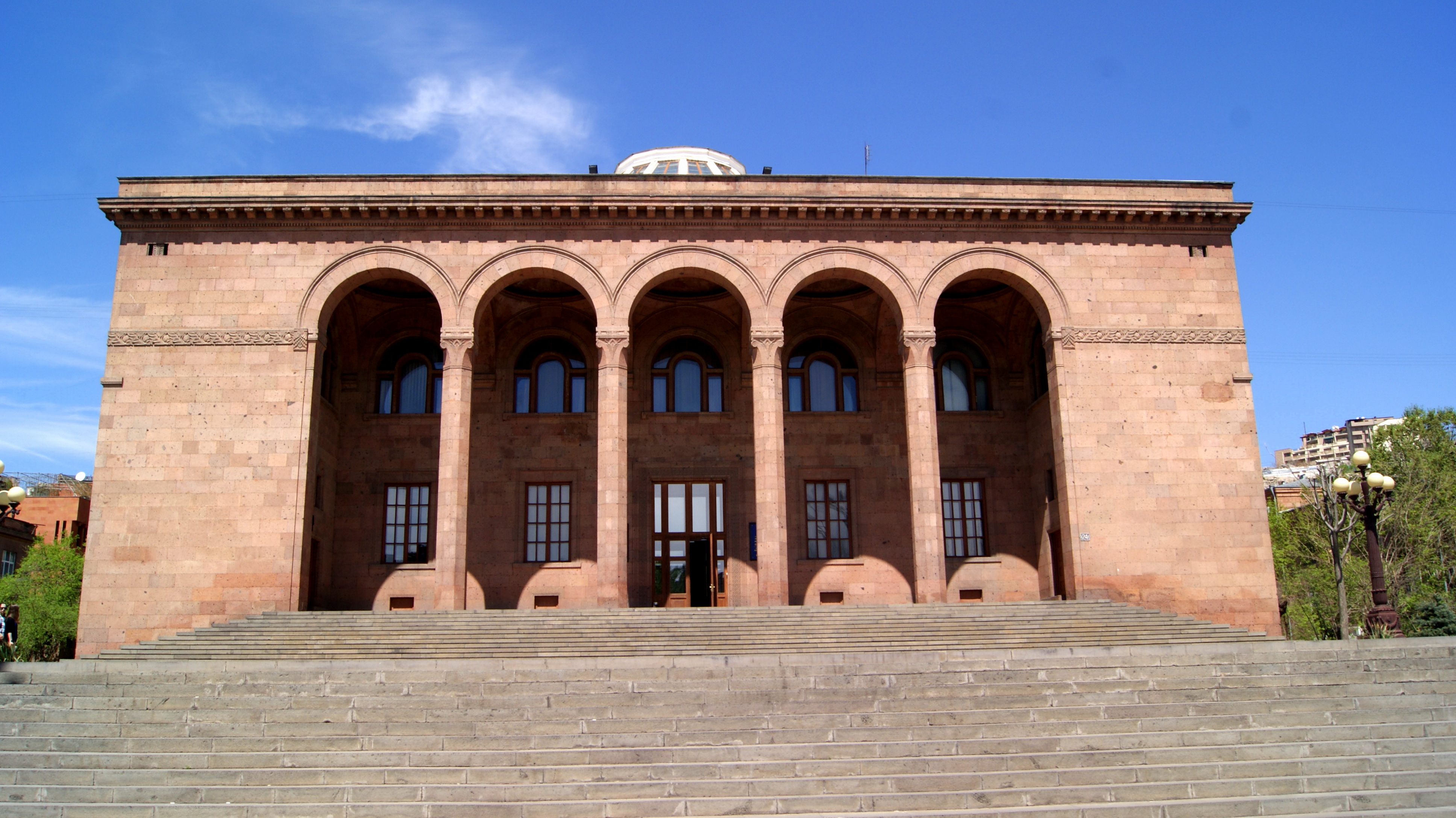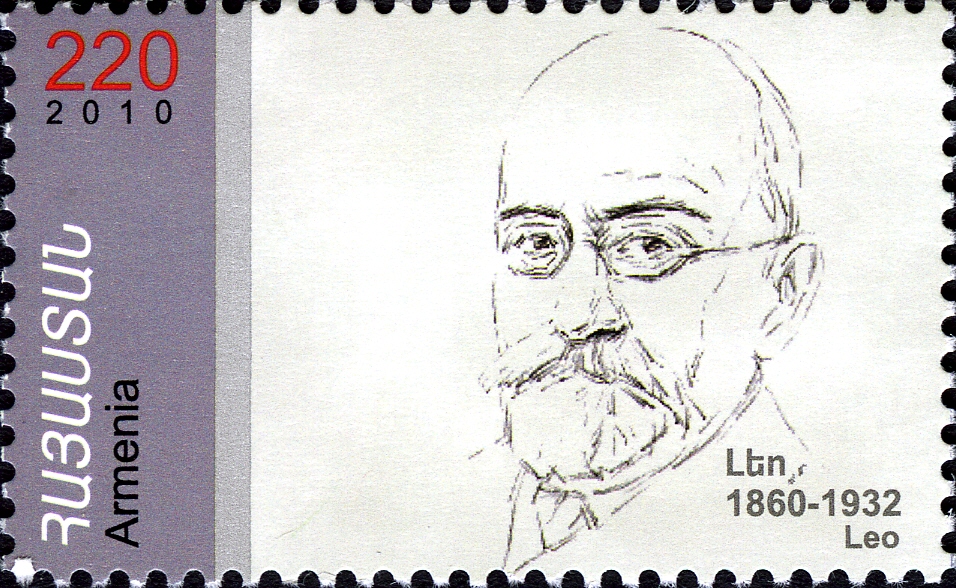|
Armenological
Armenian studies or Armenology ( hy, հայագիտություն, ) is a field of humanities covering Armenian history, language and culture. The emergence of modern Armenian studies is associated with the foundation of the Catholic Mechitarist order in the early 18th century. Until the early 20th century, Armenian studies were largely conducted by individual scholars in the Armenian communities of the Russian Empire (Moscow, Saint Petersburg, New Nakhichevan, Tiflis), Europe (Venice, Vienna, Paris, London, Berlin, Leipzig), Constantinople and Vagharshapat in Armenia. After the establishment of Soviet rule, Armenian studies, and sciences in general, were institutionalized in Armenia and put under direct control of the Academy of Sciences. Today, numerous research centers in many parts of the world specialize in Armenian studies. Notable scholars who have worked in the field of Armenian studies Early scholars * Maturin Veyssière La Croze (1661–1739), historian and orientalist * ... [...More Info...] [...Related Items...] OR: [Wikipedia] [Google] [Baidu] |
Armenian Language
Armenian ( classical: , reformed: , , ) is an Indo-European language and an independent branch of that family of languages. It is the official language of Armenia. Historically spoken in the Armenian Highlands, today Armenian is widely spoken throughout the Armenian diaspora. Armenian is written in its own writing system, the Armenian alphabet, introduced in 405 AD by the priest Mesrop Mashtots. The total number of Armenian speakers worldwide is estimated between 5 and 7 million. History Classification and origins Armenian is an independent branch of the Indo-European languages. It is of interest to linguists for its distinctive phonological changes within that family. Armenian exhibits more satemization than centumization, although it is not classified as belonging to either of these subgroups. Some linguists tentatively conclude that Armenian, Greek (and Phrygian) and Indo-Iranian were dialectally close to each other;''Handbook of Formal Languages'' (1997p. 6 wit ... [...More Info...] [...Related Items...] OR: [Wikipedia] [Google] [Baidu] |
Armenian National Academy Of Sciences
The National Academy of Sciences of the Republic of Armenia (NAS RA) ( hy, Հայաստանի Հանրապետության գիտությունների ազգային ակադեմիա, ՀՀ ԳԱԱ, ''Hayastani Hanrapetut’yan gitut’yunneri azgayin akademia'') is the Armenian national academy, functioning as the primary body that conducts research and coordinates activities in the fields of science and social sciences in Armenia. It is a member of the International Science Council. History The Academy of Sciences of the Armenian Soviet Socialist Republic was founded on 10 November 1943, on the basis of the Armenian Branch of the Soviet Academy of Sciences, which was established almost 10 years earlier, in 1935. Among its founders were Joseph Orbeli, Stepan Malkhasyants, Ivan Gevorkian and Victor Ambartsumian; Orbeli became the first president of the academy. Presidents *Joseph Orbeli (1943–1947) *Victor Ambartsumian (1947–1993) *Fadey Sargsyan (1993–2006) * Radik Martiro ... [...More Info...] [...Related Items...] OR: [Wikipedia] [Google] [Baidu] |
Humanities
Humanities are academic disciplines that study aspects of human society and culture. In the Renaissance, the term contrasted with divinity and referred to what is now called classics, the main area of secular study in universities at the time. Today, the humanities are more frequently defined as any fields of study outside of professional training, mathematics, and the natural and social sciences. They use methods that are primarily critical, or speculative, and have a significant historical element—as distinguished from the mainly empirical approaches of the natural sciences;"Humanity" 2.b, ''Oxford English Dictionary'' 3rd Ed. (2003) yet, unlike the sciences, the humanities have no general history. The humanities include the studies of foreign languages, history, philosophy, language arts (literature, writing, oratory, rhetoric, poetry, etc.), performing arts ( theater, music, dance, etc.), and visual arts (painting, sculpture, photography, filmmaking, etc ... [...More Info...] [...Related Items...] OR: [Wikipedia] [Google] [Baidu] |
Mkhitar Sebastatsi
Mkhitar Sebastatsi ( hy, Մխիթար Սեբաստացի), anglicized: Mekhitar of Sebaste, it, Mechitar (17 February 1676 – 27 April 1749) was an Armenian Catholic monk, as well as prominent scholar and theologian who founded the Mekhitarist Order, which has been based on San Lazzaro island near Venice since 1717. The Armenian historian Stepanos Nazarian described him as the "second Mesrop Mashtots". The cause for his beatification was accepted by the Holy See, due to which he is referred to as a Servant of God. Life Early life He was born Manug in Sivas Eyalet (now Sivas) in Ottoman Empire on 17 February 1676, the son of a prosperous merchant Bedros eterand his wife Sharistan. His parents gave him a good education to prepare him to assume the family business. Instead, from an early age, he wanted to become a monk. Refused permission for this, he found a young companion to flee to the mountains where they might live as hermits. Quickly found by his parents he was returned h ... [...More Info...] [...Related Items...] OR: [Wikipedia] [Google] [Baidu] |
Ashkharbek Kalantar
Ashkharbek Kalantar ( hy, Աշխարհբեկ Լոռիս-Մելիք Քալանթար; February 11, 1884, in Ardvi, Armenia – June 1942) archaeologist and historian, played an important role in founding of archaeology in Armenia. Born into the Armenian noble families of Loris-Melikov and Arghutians (from maternal side), he graduated St. Petersburg University in 1911 under Nicholas Marr. He was appointed a Fellow of the Archaeological Institute, of Imperial Russian Archaeological Society and the keeper of the Asiatic Museum in St. Petersburg. He was one of the founders of Yerevan State University. Ashkharbek Kalantar authored more than 80 scholarly articles. Early life Ashkharbek Kalantar was born in Ardvi, Armenia on February 11, 1884. He received his early education at the Nersisian School in Tiflis, graduating from there in 1903. He continued his studies at the St. Petersburg University with Nicholas Marr as his teacher. He terminated his studies in 1911 to become a member ... [...More Info...] [...Related Items...] OR: [Wikipedia] [Google] [Baidu] |
Yaroslav Dashkevych
Yaroslav Dashkevych ( uk, Ярослав Романович Дашкевич) (1926-2010) was Ukrainian historian, archaeographer, armenologist. He wrote over 1700 scientific and publicist works. Dashkevych was a representative of Hrushevsky school of history and a victim of Stalinist terror. He was a Doctor of Historical Sciences. Biography Dashkevych was born in Lviv in a family of war veterans. His father Roman Dashkevych was a lawyer and later a general-khorunzhyi (general-ensign) of the Ukrainian People's Army and his mother Olena Stepaniv was a teacher and later chotar (captain) of the Ukrainian Galician Army. After graduating the Lviv Academic Gymnasium in 1944, until 1949 Yaroslav Dashkevych studied at several institutes (Lviv Medical University, Lviv University, and Gubkin Russian State University of Oil and Gas). During his studying at Lviv University, in 1944-49 he was a librarian and bibliographer at the Stefanyk National Science Library. In December of 1949 Dashk ... [...More Info...] [...Related Items...] OR: [Wikipedia] [Google] [Baidu] |
Grigor Ghapantsyan
Grigor Ghapantsyan (''Kapantsian'', hy, Գրիգոր Ղափանցյան, 1887 - 1957) was an Armenian historian, orientalist, linguist and philologist, Doctor of Philological Sciences, Professor, Academician of the Academy of Sciences of Armenia, Honored Scientist of the Armenian SSR. Biography Ghapantsyan was born on February 17, 1887 in Ashtarak. He received primary education in Ashtarak, then studied in Saint Petersburg. In 1913 he graduated from the Department of Armenian-Georgian Philology of the Faculty of Oriental Languages of St. Petersburg University, returned to Armenia and up to 1918 conducted various courses in the field of the Armenian Studies at the Gevorgian Seminary in Echmiadzin. In May 1918 he took an active part in the Battle of Sardarapat. In 1921 he was invited to Yerevan State University Yerevan State University (YSU; hy, Երևանի Պետական Համալսարան, ԵՊՀ, ''Yerevani Petakan Hamalsaran''), also simply University of Yerevan, is the o ... [...More Info...] [...Related Items...] OR: [Wikipedia] [Google] [Baidu] |
Robert Pierpont Blake
Robert Pierpont Blake (November 1, 1886 – May 9, 1950) was an American Byzantinist and scholar of the Armenian and Georgian cultures. Robert P. Blake was born in San Francisco on November 1, 1886. As a John Harvard Traveling Fellow, he chiefly studied and worked, between 1911 and 1918, in Russia where he mastered Russian and began his study of Arabic, Syriac, Armenian and Georgian. In 1918, on behalf of the Saint Petersburg State University, he arrived in Georgia to update the conflicting catalogues of the Tbilisi manuscripts and then to investigate various texts of the Bible. He became a Professor of Tbilisi State University when it was founded early in 1918. He remained there and taught the Greek language and the Byzantine history until Sovietization of Georgian Democratic Republic. As a volunteer he fought Russian invaders near Tbilisi at Tabakhmela in February 1921. In 1921 he received an appointment from Harvard of which he later became a professor. He was instrumental ... [...More Info...] [...Related Items...] OR: [Wikipedia] [Google] [Baidu] |
Karapet Basmadjian
Karapet or Garabet or Garabed is a common Armenian given name. They may refer to: *a pre-Christian Armenian thunder-god, Karapet Religion *Karabet ( hy, Կարապետ, link=no) or Garabed (Western Armenian), the Armenian name for '' prodromos'', referring to John the Baptist *St. Karapet, a church of the Noravank monastery * Saint Karapet Monastery, at Glak, a 4th-century Armenian monastery *Karapet, a church of the Khtzkonk monastery near Ani * Saint Karapet Church, Tbilisi, Armenian church in Tbilisi, Georgia Given name Karapet * Karapet II of Armenia (died 1729), Catholicos of the Armenian Apostolic Church (1726–1729) *Karapet Chobanyan (born 1927), Armenian scientist *Karapet Karapetyan (born 1982), also known as Karapet Papijan, Armenian-Dutch kickboxer *Karapet Mikaelyan (born 1969), Russia-born Armenian football (soccer) player *Karapet Rubinyan (born 1957), Armenian politician * Karapet Utudjian (1823–1904), Armenian Ottoman journalist, publicist, and writer *Karap ... [...More Info...] [...Related Items...] OR: [Wikipedia] [Google] [Baidu] |
Arakel Babakhanian
Arakel Grigori Babakhanian ( hy, Առաքել Գրիգորի Բաբախանյան; – 14 November 1932), commonly known by his pen name Leo ( hy, Լեո), was an Armenian historian, writer, critic and professor of Yerevan State University. He is best known for authoring a multi-volume work on the history of Armenia. Leo adopted a critical stance in examining some of the most important issues in Armenian history, literature and contemporary problems of the early 20th century. Harutyunian, Sh. R. and A. K. Ohanian. s.v.Leo" Armenian Soviet Encyclopedia. Yerevan: Armenian Academy of Sciences, 1978, vol. 4, pp. 566-567. Biography Leo was born on 14 April 1860 in the city of Shusha/Shushi in the region of Mountainous Karabakh, then a part of the Russian Empire. He was one of several children of Grigor Babakhanian, a tailor (later bellringer) of modest means. He graduated from the local school there in 1878. Due to the death of his father in 1879, Leo was unable to attend univer ... [...More Info...] [...Related Items...] OR: [Wikipedia] [Google] [Baidu] |
Nicholas Adontz
Nicholas Adontz (, ''Nikoghayos Adonts’'', also spelled Adonts; ; January 10, 1871 – January 27, 1942) was an Armenian historian, specialist of Byzantine and Armenian studies, and philologist. Yuzbashyan, Karen. s.v. Adonts', Nikoghayos Gevorki. Armenian Soviet Encyclopedia. Yerevan: Armenian Academy of Sciences, 1974, vol. 1, p. 77. Adontz was the author of ''Armenia in the Period of Justinian'', a highly influential work and landmark study on the social and political structures of early Medieval Armenia. Biography Early life Adontz was born Nikoghayos Ter-Avetikian () in the village of Brnakot in Sisian, which was then part of the Zangezur ''uezd'' of the Elisabethpol Governorate (modern Syunik). His family traced its roots to an eighteenth-century Armenian military figure and close ally of David Bek named Ter-Avetik. Yuzbashyan, Karen. "Nikoghayos Adonts'i gitakan zharangut'yune" he intellectual legacy of Nikoghayos Adonts ''Patma-Banasirakan Handes'' 4 (1962): pp. 1 ... [...More Info...] [...Related Items...] OR: [Wikipedia] [Google] [Baidu] |





